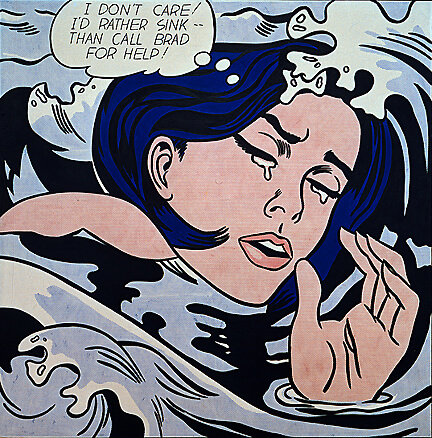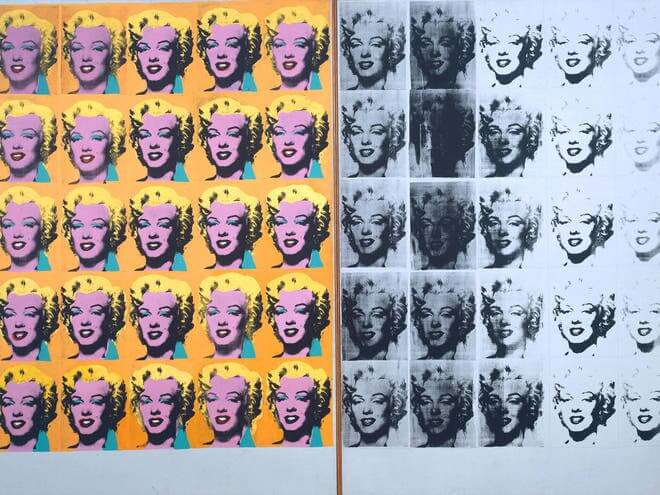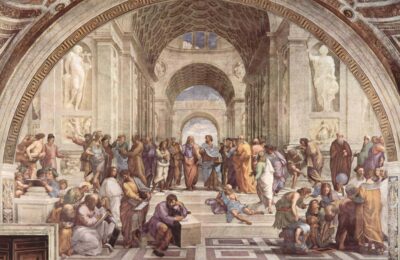Pop Art in Fine Arts: A Fusion of Popular Culture and Artistic Expression
- Pop Art Influenced the world of Fine Arts, combining popular culture with artistic innovation.
- We see the use of bold colors from Andy Warhol’s Campbell’s Soup Cans to Roy Lichtenstein’s comic-inspired art pieces.
- It not only criticized traditional art designs but also made art more relatable to the public.
- Through blending advertising, consumerism, and celebrity culture, This art movement enhanced the limits of high art and low culture.
In this article, we will explore the origins, evolution, and Influences of Pop Art, and investigate how it had a major effect on contemporary art.
Background and Development of Pop Art
Pop Art emerged in the 1950s in Britain and later exploded in the 1960s in the United States.
It arose as a response to the intense emotional depth of Abstract Expressionism.
It focuses on abstract expressionism instead of the common objects and images that dominate daily life.
British Pop Art (1950s):
Initial artists like Richard Hamilton and Eduardo Paolozzi:
- Used consumer goods and imagery from mass media to comment on post-war consumer culture.
American Pop Art (1960s):
Artists such as Andy Warhol and Roy Lichtenstein:
- Adopted commercial techniques, transforming advertisements, comics, and mass-produced products into unique masterpieces.

It reflected a rapidly changing society by making where mass media, advertising, and consumerism became increasingly pervasive.
It helped redefine the role of art in reflecting the realities of modern life.
Important Characteristics of this Art Movement
It is unique in its use of vibrant, eye-catching visuals and mass-produced imagery.
Below are the defining elements that make Pop Art so recognizable:
- Bold and Vibrant Colors:
Often utilizing primary colors such as red, yellow, and blue.
- Impact from Mass Media and Advertising:
Newspapers, magazines, and commercials provided a wealth of imagery for Pop artists.
- Repetition and Mass Production:
Inspired by factory production techniques, especially in Warhol’s silkscreen prints.
- Irony and Satire:
This art style often criticizes modern culture, highlighting society’s obsession with celebrity and commodification.
- Use of Everyday Objects:
It includes daily life consumer items, like Soup Cans or Coca-Cola bottles, were also transformed into art.
Pop Artists and Their Famous Art Works
Pop Art has become one of the most influential art movements some of the most famous artists:
- Andy Warhol:
Known for his unique art pieces like:
- Campbell’s Soup Cans (1962)
- Marilyn Monroe prints
Warhol used mass production techniques to comment on celebrity culture and consumerism.
- Roy Lichtenstein:
Famous for his comic-inspired works such as
- Whaam! (1963).
- Drowning Girl (1963).
Lichtenstein played with the aesthetics of mass media.
- Richard Hamilton:
One of his most famous artworks is his collage Just What Is It That Makes Today’s Homes So Different, So Appealing? (1956).
- Keith Haring:
Known for his bold, graffiti-inspired street art that often carried social messages on activism.
- Claes Oldenburg:
He is famous for his large-scale sculptures of everyday items like
- Giant Ice Cream Cone.
- Clothespin.
The Impact of Pop Art on Fine Arts and Culture
Pop Art not only influenced the art world but also had a profound effect on other cultural sectors:
- Revolutionized the Concept of Art:
- By blending high art with elements of popular culture.
- Pop Art challenged the traditional notions of what art could be.
- Influenced Fashion, Design, and Advertising:
The bold, commercial aesthetics of Pop Art continue to inspire contemporary
- Fashion.
- graphic design.
- Inspired Future Art Movements:
From street art to digital design, Its influence persists in modern-day artistic practices.
It has also led to debates about art’s role in society,
In which it questions whether art should reflect the complexities of human emotions.
Conclusion: The Enduring Legacy
- 1950s to the present day, it has retained its relevance, continuing to shape the world of Fine Arts.
- It has made art more accessible and bridged the gap between high and low culture.
- It also inspires countless artists to reimagine the possibilities of artistic expression.
- As we continue to consume media and popular culture at unprecedented rates.
- Pop Art’s commentary on consumerism and celebrity remains as insightful today as it was decades ago.







